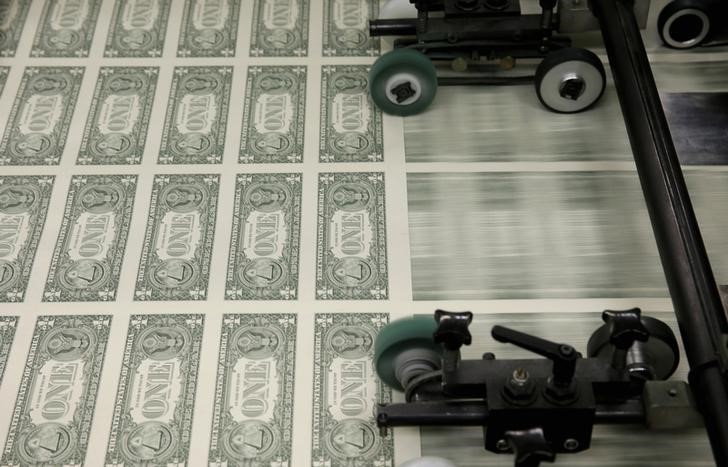Investing.com - The dollar was little changed against the other major currencies on Friday, still hovering near six-month lows as the Federal Reserve’s cautious stance on future interest rate hikes continued to weigh on the greenback.
USD/JPY gained 0.41% to 108.66, still close to Thursday’s 18-month low of 107.66.
The greenback came under strong pressure against the yen after the minutes from the Fed's March policy meeting on Wednesday indicated that the central bank is unlikely to raise interest rates before June due to concerns over global economic growth.
The greenback briefly strengthened after Fed Chair Janet Yellen said late Thursday that the U.S. economy was not a "bubble economy" and that the labor market was "healing".
Yellen also said that the December decision to raise interest rates was not a mistake.
But the yen was hit on Friday after Japan Finance Minister Minister Taro Aso warned that rapid currency moves were "undesirable," that the yen's were "one-sided" and that Japan would take steps as needed.
EUR/USD slipped 0.16% to 1.1360, after hitting six-month highs of 1.1454 on Thursday.
Sentiment in the single currency remained vulnerable after senior European Central Bank officials reiterated on Thursday that they are prepared to inject more stimulus if necessary.
Meanwhile, the dollar was lower against the pound, with GBP/USD up 0.30% at 1.4097 and was fractionally higher against the Swiss franc, with USD/CHF up 0.08% at 0.9566.
Sterling pared back initial gains after the U.K. Office for National Statistics reported on Friday that manufacturing production declined by 1.1% in February, compared to expectations for a 0.2% fall. Year-on-year, manufacturing production dropped 1.8% in February.
The report also showed that U.K. industrial production slipped by 0.3% in February, compared to expectations for a 0.1% rise.
Another report showed that the U.K. trade deficit narrowed to £11.96 billion in February from a revised deficit of £12.16 billion in January. Analysts had expected the trade deficit to narrow to £10.20 billion in February.
The Australian and New Zealand dollars were stronger, with AUD/USD up 0.60% at 0.7551 and with NZD/USD rising 0.38% to 0.6802.
Elsewhere, USD/CAD tumbled 1.03% to trade at 1.3012, after Statistics Canada said the number of employed people increased by 40,600 in March, blowing past expectations for a 10,000 rise and following a 2,300 decline the previous month.
The report also showed that Canada’s unemployment rate fell to 7.1% last month from 7.3% in February, confounding expectations for an unchanged reading.
Another report showed that Canada’s housing starts increased by 204,300 in March, compared to expectations for a rise of 190,000. Housing starts climbed by 219,100 in February, whose figure was revised from a previously estimated 212,600 gain.
The U.S. dollar index, which measures the greenback’s strength against a trade-weighted basket of six major currencies, was steady at 94.55, not far from Thursday’s six-month low of 94.03.
